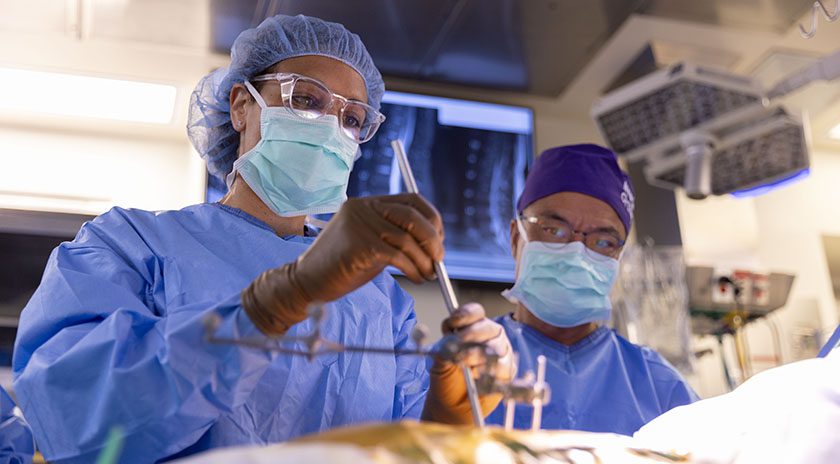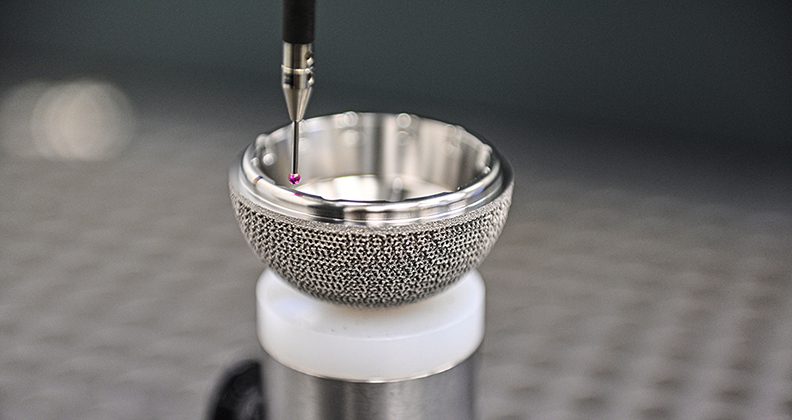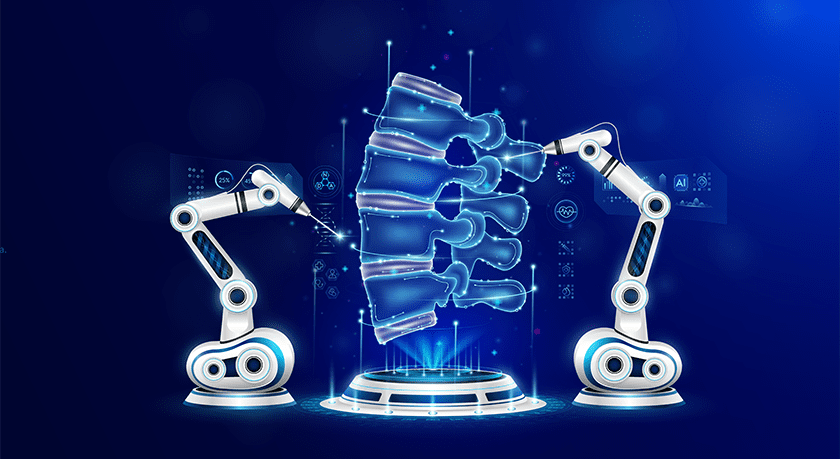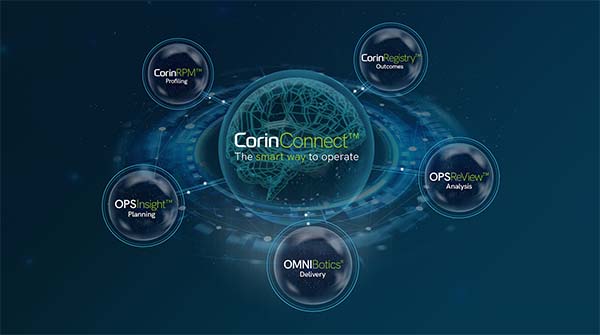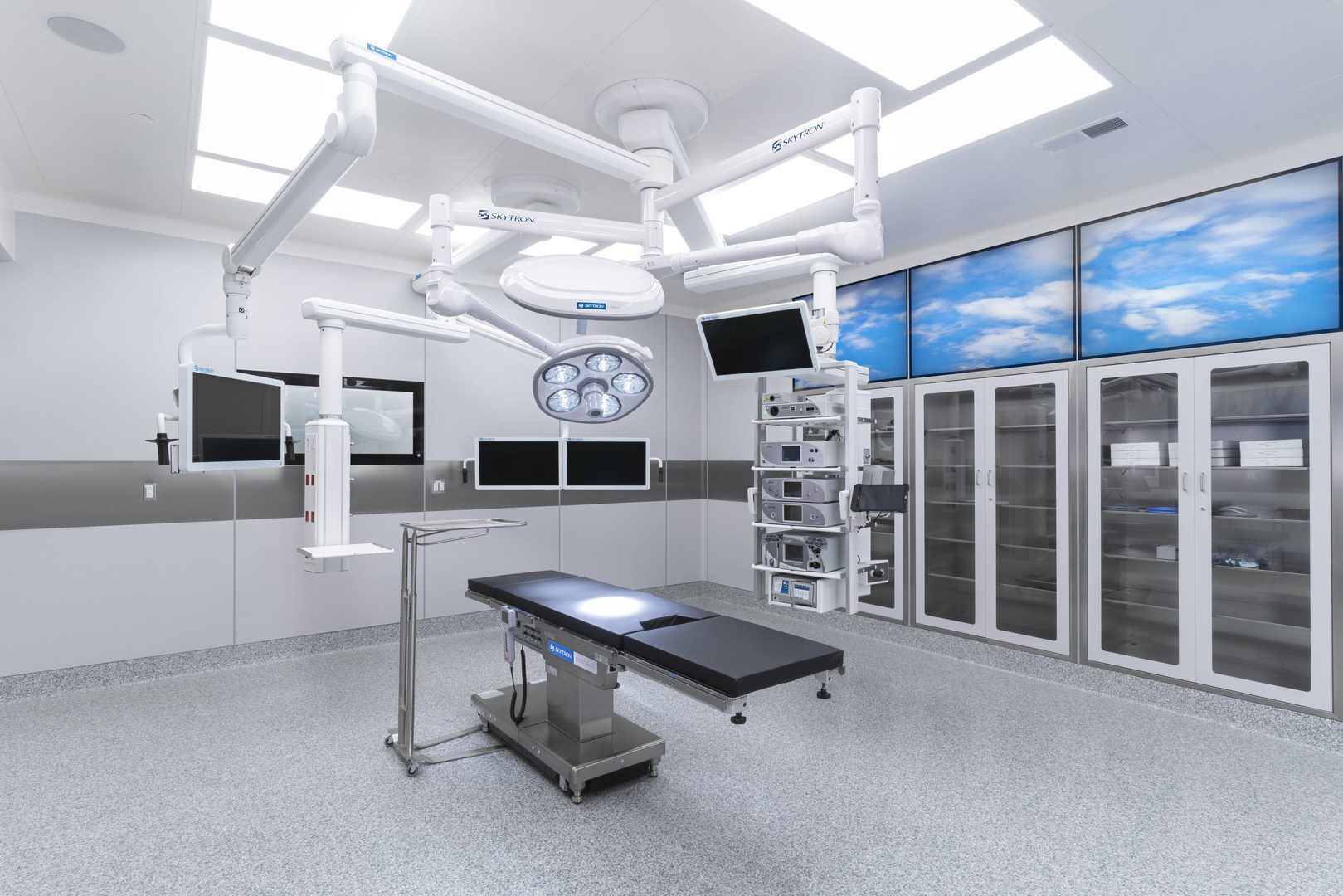

 Copy to clipboard
Copy to clipboard 
Kuros Biosciences is one of the fastest-growing companies in orthopedics due to expanded indications and commercialization of its MagnetOs bone graft platform. The orthobiologics company reached revenue of CHF 75.6 ($86.7 million) in 2024, growing 125% and expanding its presence from 11 to 23 countries compared to 2023. Kuros CEO Chris Fair said 2024 was a foundational year for the company, and set the stage for substantial growth in the years ahead.
Kuros’ leadership team believed its focus on the biologic’s surface topography would make a superior product. They devised a NeedleGrip surface technology that has been shown to grow bone even in soft tissue without added cells or growth factors. “Think about when hip, knee and spine implants started using textured and porous surfaces to improve the device’s integration with bone,” Mr. Fair said. “We asked, how do we do that with biologics?”
To stand out in the crowded orthobiologics market, Kuros knew it would need to prove MagnetOs’ superiority over other commercialized products. The company has initiated or completed 20 Level I – IV clinical trials. A prospective, randomized, multicenter, intra-patient controlled human clinical trial of MagnetOs Granules versus autograft in instrumented posterolateral spinal fusion was published in Spine in October 2024. The study showed that MagnetOs achieved nearly twice the fusion rate of autograft.
Kuros believes data will give the company a strategic edge as it builds out its product portfolio and enters new markets. “It’s amazing how many companies talk about their products without Level I evidence,” Mr. Fair said. “There’s only a handful of companies that have it, and we’re one of them.”
We spoke with Mr. Fair hours after Kuros announced its FY24 earnings. The company expects sales growth of at least 60% in 2025 and anticipates sales of between $220 million and $250 million by 2027.
You announced a five-year agreement with Medtronic for certain spine geographies in the U.S. How did the relationship come about, and how does it strategically help Kuros?
Mr. Fair: Medtronic conducted market analysis to find a product offering on the spectrum between BMP and DBM. They canvassed the marketplace and looked at alternatives, from cellular allograft to synthetic materials, to find the best viable alternative to fill their gap. There’s a big difference in price between DBM and BMP. Efficacy was also a consideration. They felt that our product was the best.
We started with a two-year pilot program, which was very successful. We worked together to determine how to position products in our portfolios and expand the relationship. It resulted in a new five-year agreement.
Strategically, it’s a great fit for both of us. Kuros has an independent sales channel that works in different geographies than Medtronic, and we’re expanding our market penetration not just in the spine, but now into the extremities. Having a partner like Medtronic allows us to maintain a revenue stream. Knowing that it’s a five-year agreement also shows that we’re going to build long-term value for each other. They have a great product in MagnetOs alongside their hardware business, and we get access to their network, distributors and surgeon relationships.
What’s your strategy for expanding into the extremities segment?
Mr. Fair: We’re taking what we learned from the spine marketplace and implementing clinical evidence and a science-first approach. The first phase was to break down extremities into two submarkets: foot & ankle and trauma.
We’re attacking the foot & ankle space now. We’ve identified KOLs across the country and started lining out ways to obtain clinical evidence, starting with a Level I clinical trial. We’re also leveraging our existing relationships with hospitals across the country. That access gives us an understanding of the revenue line and helps us meet user requirements for product sizing and packaging.
We plan to ramp up the revenue stream in foot & ankle in the second half of this year and into next year. Then we’ll start the trauma indications in the second half of 2025, identify our KOLs and start our clinical studies and analysis in 2026.
We estimate the market size for extremities orthobiologics is over $1 billion, and our opportunity is between $1 billion and $3 billion.
What are Kuros’ priorities for 2025?
Mr. Fair: Our number one priority is expanding our relationship with Medtronic. Number two is our organic pipeline; we’ll be launching new products this year in the minimally invasive surgery category. Number three is operational efficiency from a supply chain side, as well as the digitization of the business.
We’ve spent the past year and a half moving from paper and pen to a fully digitized ERP system, which will help our supply chain, reduce costs and allow us to grow from $86 million to $250 million. To succeed, you need to invest in infrastructure.
We have a fiscal responsibility to grow this business. We’ve achieved high year-over-year growth, turned profitable in 2024 and have no debt. Not many companies can say that.
Our last initiative is to continue to build an environment that our teammates and partners want to associate with. Everyone — our employees, surgeons and distributors — have a choice and continue to choose to work with us.
How would you describe the state of the orthobiologics market?
Mr. Fair: The value of clinical evidence is becoming clear, making it a very competitive marketplace. Companies that are reacting to the market the right way are investing in clinical evidence.
Years ago, people would say, “A bone graft is a bone graft is a bone graft.” Clinical evidence has proven that’s not true. Our MAXA study showed very clearly that from a gold standard perspective, there are better things to use than autografts for certain patient populations. There is a lack of data for the cellular allograft category, and the disease transmission and risk are not zero. Hospitals are starting to realize this and push back.
The orthobiologics marketplace is shifting, and physicians are a big part of that. A well-respected physician told me that he and his colleagues used to ask, ‘Which hardware would best solve this patient’s problem?’ Now, they first ask, ‘Which biologic should we use and why?’
A paradigm shift is taking place. Accessing clinical evidence and identifying differences in products on the market should be part of the physician’s decision-making tree. Orthobiologics is at a turning point, and we’re happy to be one of the companies forcing change.
Kuros Biosciences is one of the fastest-growing companies in orthopedics due to expanded indications and commercialization of its MagnetOs bone graft platform. The orthobiologics company reached revenue of CHF 75.6 ($86.7 million) in 2024, growing 125% and expanding its presence from 11 to 23 countries compared to 2023. Kuros CEO Chris...
Kuros Biosciences is one of the fastest-growing companies in orthopedics due to expanded indications and commercialization of its MagnetOs bone graft platform. The orthobiologics company reached revenue of CHF 75.6 ($86.7 million) in 2024, growing 125% and expanding its presence from 11 to 23 countries compared to 2023. Kuros CEO Chris Fair said 2024 was a foundational year for the company, and set the stage for substantial growth in the years ahead.
Kuros’ leadership team believed its focus on the biologic’s surface topography would make a superior product. They devised a NeedleGrip surface technology that has been shown to grow bone even in soft tissue without added cells or growth factors. “Think about when hip, knee and spine implants started using textured and porous surfaces to improve the device’s integration with bone,” Mr. Fair said. “We asked, how do we do that with biologics?”
To stand out in the crowded orthobiologics market, Kuros knew it would need to prove MagnetOs’ superiority over other commercialized products. The company has initiated or completed 20 Level I – IV clinical trials. A prospective, randomized, multicenter, intra-patient controlled human clinical trial of MagnetOs Granules versus autograft in instrumented posterolateral spinal fusion was published in Spine in October 2024. The study showed that MagnetOs achieved nearly twice the fusion rate of autograft.
Kuros believes data will give the company a strategic edge as it builds out its product portfolio and enters new markets. “It’s amazing how many companies talk about their products without Level I evidence,” Mr. Fair said. “There’s only a handful of companies that have it, and we’re one of them.”
We spoke with Mr. Fair hours after Kuros announced its FY24 earnings. The company expects sales growth of at least 60% in 2025 and anticipates sales of between $220 million and $250 million by 2027.
You announced a five-year agreement with Medtronic for certain spine geographies in the U.S. How did the relationship come about, and how does it strategically help Kuros?
Mr. Fair: Medtronic conducted market analysis to find a product offering on the spectrum between BMP and DBM. They canvassed the marketplace and looked at alternatives, from cellular allograft to synthetic materials, to find the best viable alternative to fill their gap. There’s a big difference in price between DBM and BMP. Efficacy was also a consideration. They felt that our product was the best.
We started with a two-year pilot program, which was very successful. We worked together to determine how to position products in our portfolios and expand the relationship. It resulted in a new five-year agreement.
Strategically, it’s a great fit for both of us. Kuros has an independent sales channel that works in different geographies than Medtronic, and we’re expanding our market penetration not just in the spine, but now into the extremities. Having a partner like Medtronic allows us to maintain a revenue stream. Knowing that it’s a five-year agreement also shows that we’re going to build long-term value for each other. They have a great product in MagnetOs alongside their hardware business, and we get access to their network, distributors and surgeon relationships.
What’s your strategy for expanding into the extremities segment?
Mr. Fair: We’re taking what we learned from the spine marketplace and implementing clinical evidence and a science-first approach. The first phase was to break down extremities into two submarkets: foot & ankle and trauma.
We’re attacking the foot & ankle space now. We’ve identified KOLs across the country and started lining out ways to obtain clinical evidence, starting with a Level I clinical trial. We’re also leveraging our existing relationships with hospitals across the country. That access gives us an understanding of the revenue line and helps us meet user requirements for product sizing and packaging.
We plan to ramp up the revenue stream in foot & ankle in the second half of this year and into next year. Then we’ll start the trauma indications in the second half of 2025, identify our KOLs and start our clinical studies and analysis in 2026.
We estimate the market size for extremities orthobiologics is over $1 billion, and our opportunity is between $1 billion and $3 billion.
What are Kuros’ priorities for 2025?
Mr. Fair: Our number one priority is expanding our relationship with Medtronic. Number two is our organic pipeline; we’ll be launching new products this year in the minimally invasive surgery category. Number three is operational efficiency from a supply chain side, as well as the digitization of the business.
We’ve spent the past year and a half moving from paper and pen to a fully digitized ERP system, which will help our supply chain, reduce costs and allow us to grow from $86 million to $250 million. To succeed, you need to invest in infrastructure.
We have a fiscal responsibility to grow this business. We’ve achieved high year-over-year growth, turned profitable in 2024 and have no debt. Not many companies can say that.
Our last initiative is to continue to build an environment that our teammates and partners want to associate with. Everyone — our employees, surgeons and distributors — have a choice and continue to choose to work with us.
How would you describe the state of the orthobiologics market?
Mr. Fair: The value of clinical evidence is becoming clear, making it a very competitive marketplace. Companies that are reacting to the market the right way are investing in clinical evidence.
Years ago, people would say, “A bone graft is a bone graft is a bone graft.” Clinical evidence has proven that’s not true. Our MAXA study showed very clearly that from a gold standard perspective, there are better things to use than autografts for certain patient populations. There is a lack of data for the cellular allograft category, and the disease transmission and risk are not zero. Hospitals are starting to realize this and push back.
The orthobiologics marketplace is shifting, and physicians are a big part of that. A well-respected physician told me that he and his colleagues used to ask, ‘Which hardware would best solve this patient’s problem?’ Now, they first ask, ‘Which biologic should we use and why?’
A paradigm shift is taking place. Accessing clinical evidence and identifying differences in products on the market should be part of the physician’s decision-making tree. Orthobiologics is at a turning point, and we’re happy to be one of the companies forcing change.

You are out of free articles for this month
Subscribe as a Guest for $0 and unlock a total of 5 articles per month.
You are out of five articles for this month
Subscribe as an Executive Member for access to unlimited articles, THE ORTHOPAEDIC INDUSTRY ANNUAL REPORT and more.
CL
Carolyn LaWell is ORTHOWORLD's Chief Content Officer. She joined ORTHOWORLD in 2012 to oversee its editorial and industry education. She previously served in editor roles at B2B magazines and newspapers.


